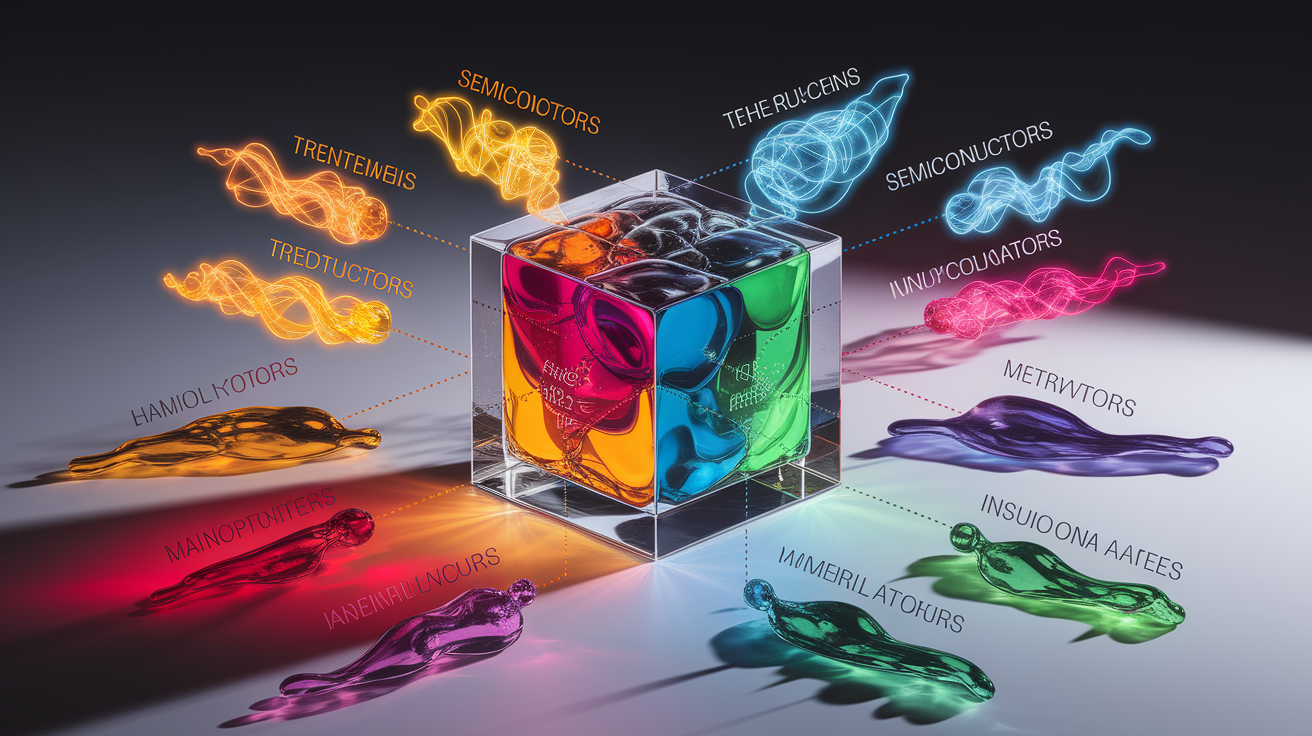Quick Answer: Metal conductivity is the remarkable ability of metals to allow electric current to flow through them easily. This happens because metals have a unique structure containing “free electrons” that can move from atom to atom, carrying an electrical charge. This single property is the foundation of our entire electrical world, from the wiring in our homes to the intricate circuits in our smartphones.
Electrons on the Move: Defining Metal Conductivity
Have you ever wondered what makes a copper wire so different from a plastic spoon when it comes to electricity? The secret lies in a fascinating property known as electrical conductivity. In simple terms, it’s a measure of how well a material can carry an electric current. Metals are the champions of conductivity, and it’s all thanks to their unique atomic structure.
Imagine the atoms in a piece of metal are like a tightly packed crowd of people. Each person (atom) has a wallet (their outermost electrons) that they aren’t holding onto very tightly. In this metallic crowd, these wallets can be passed around easily from person to person. These freely moving “wallets” are the free electrons. When you apply an electrical voltage—like plugging something into an outlet—it acts like a command to start passing the wallets in a specific direction. This organized movement of electrons is what we call an electric current.

This “sea of electrons,” as scientists call it, is why metals are such good conductors. The electrons aren’t tightly bound to any single atom, so they are free to drift and carry a charge. This is a fundamental concept in physics and is at the heart of the nature of electric flow. Materials like plastic, wood, or glass are called insulators because their electrons are held tightly by their atoms and cannot move around to create a current.
It’s important to note that while individual electrons drift relatively slowly, the electrical signal itself travels almost instantaneously. This is because the signal is carried by an electric field, which explains how electric fields propagate electricity through the wire at nearly the speed of light.
Factors Influencing Conductivity
Not all metals are created equal when it comes to conductivity. The efficiency of this electron flow can be boosted or hindered by several key factors. Material science experts carefully consider these to select the right metal for a specific job.
The Heat Effect: Temperature’s Role
One of the most significant factors affecting metal conductivity is temperature. You might think that adding heat (energy) would make electrons move faster and improve conductivity, but the opposite is true. As a metal heats up, its atoms vibrate more vigorously. This creates a chaotic “obstacle course” for the free electrons, causing them to scatter and collide more often, which slows down their overall flow. This is why electrical resistance increases with temperature in most metals, leading to a decrease in conductivity.

Purity is Key: Impurities and Defects
A metal’s purity plays a huge role in its ability to conduct electricity. Imagine our “sea of electrons” again. Impurities—atoms of a different element mixed in—are like large, unmovable rocks in that sea. They disrupt the smooth, orderly structure of the metal atoms, impeding the flow of electrons. Similarly, physical defects in the metal’s crystal structure can act as blockades, reducing the overall electron mobility and lowering conductivity.
Electrical vs. Thermal Conductivity: Two Sides of the Same Coin?
You may have also heard of thermal conductivity—the ability of a material to conduct heat. In metals, these two properties are closely linked! The same free electrons that are so good at carrying electric charge are also excellent at transferring heat energy. That’s why a metal spoon left in a hot cup of tea quickly becomes hot to the touch. The Wiedemann-Franz law in physics formally describes this relationship, showing that metals that are good electrical conductors are typically good thermal conductors as well.
Benchmark Conductors: Silver, Copper, and Gold
While most metals are good conductors, a few stand out from the pack. The choice of which one to use often comes down to a trade-off between performance, cost, and durability.

- Silver (Ag): On the conductivity scale of metals, silver sits at the very top. It has the highest electrical conductivity of any element. However, its high cost and tendency to tarnish (which can reduce conductivity at connection points) mean it’s reserved for specialized applications like high-performance connectors, satellites, and certain circuit boards.
- Copper (Cu): Copper is the workhorse of the electrical world. It offers excellent conductivity—nearly as good as silver’s—but at a fraction of the cost. Its ductility (ability to be drawn into wires) and abundance make it the go-to material for everything from household electrical wiring to the massive cables in our power grids.
- Gold (Au): Gold is slightly less conductive than copper, but it has a superpower: it is extremely resistant to corrosion and oxidation. While copper can tarnish over time, gold remains pristine. This makes it invaluable for high-reliability electronic components like connector plating on CPUs and high-end audio/video cables, ensuring a clean, stable connection for many years.
Conductivity in Action: Key Applications
The electrical properties of metals are the silent engine of our technological society. Without them, the modern world would grind to a halt. The applications are virtually endless:

- Power Transmission: Huge aluminum and copper cables span countries, carrying electricity from power plants to our homes and businesses.
- Electronics: Every single electronic device, from your television to your laptop, relies on intricate printed circuit boards (PCBs) where thin copper tracks act as “highways” for electrical signals.
- Motors and Generators: The immense power of electric motors is made possible by tightly wound coils of copper wire, which create strong magnetic fields when current flows through them.
- Environmental Monitoring: Understanding conductivity isn’t just for electronics. It’s also used in water quality testing. While pure water is a poor conductor, the principles of conductivity in water show that dissolved salts and minerals release ions (charged particles) that allow it to conduct electricity. By measuring water’s conductivity, scientists can quickly assess its purity and pollution levels.
Connecting the Dots: Why Conductivity Matters
From the simple act of flipping a light switch to a satellite beaming signals back to Earth, metal conductivity is the fundamental principle making it all possible. It’s a perfect example of how the microscopic properties of a material—the behavior of its electrons—can have a massive impact on our macroscopic world.

Understanding the factors that affect conductivity allows engineers to choose the perfect material for every job: affordable copper for household wiring, corrosion-resistant gold for a life-saving medical device, and lightweight aluminum for long-distance power lines. This knowledge also helps us appreciate the importance of safety. The same property that makes a wire so useful can be dangerous, which is why understanding why electricity is hazardous to humans—whose bodies also conduct electricity due to water and ions—is critical.
So, the next time you plug in your phone, take a moment to marvel at the silent, invisible river of electrons flowing through that cable—a powerful current unlocked by the unique and wonderful nature of metals.













